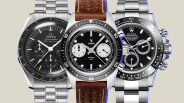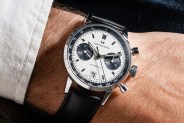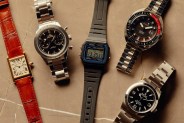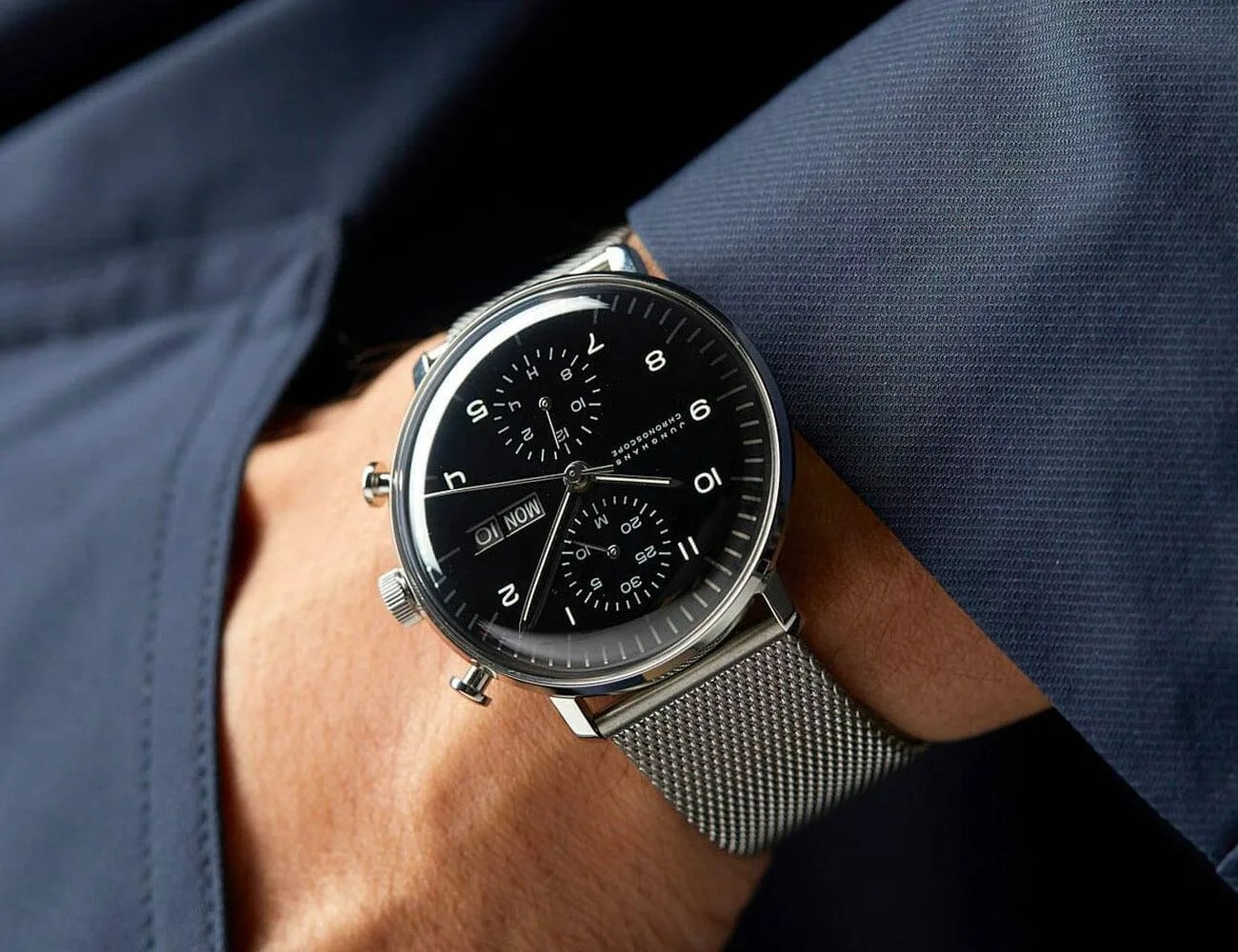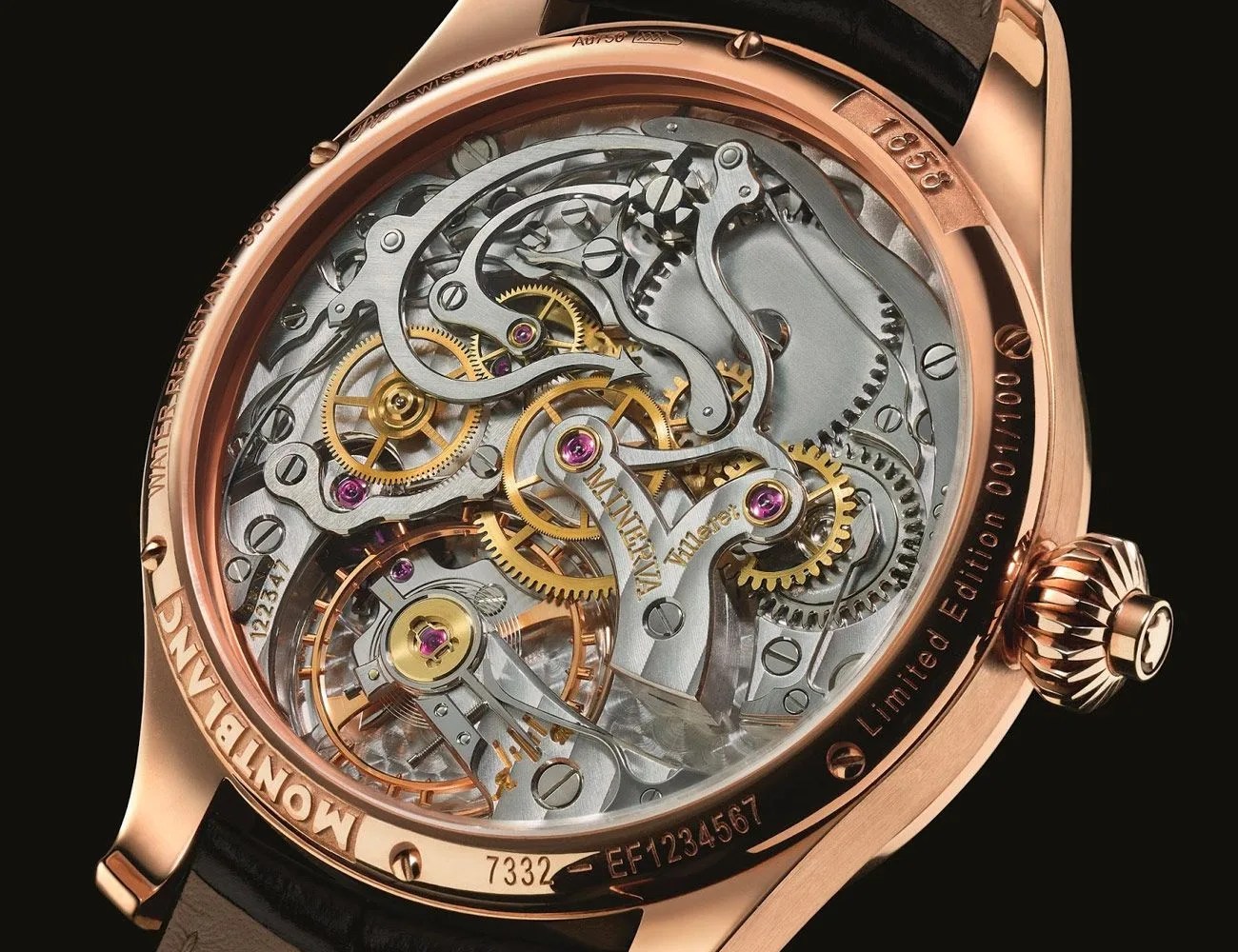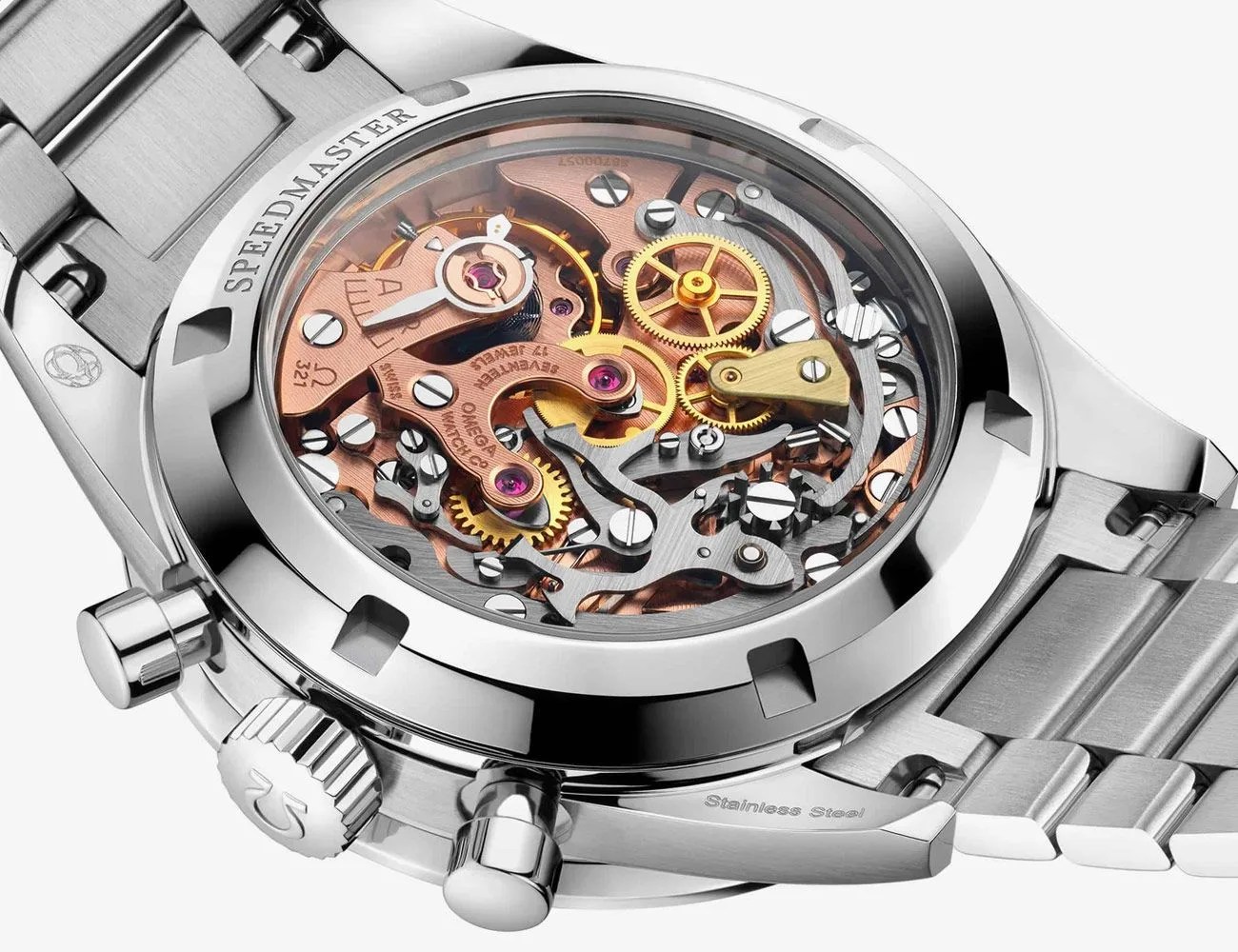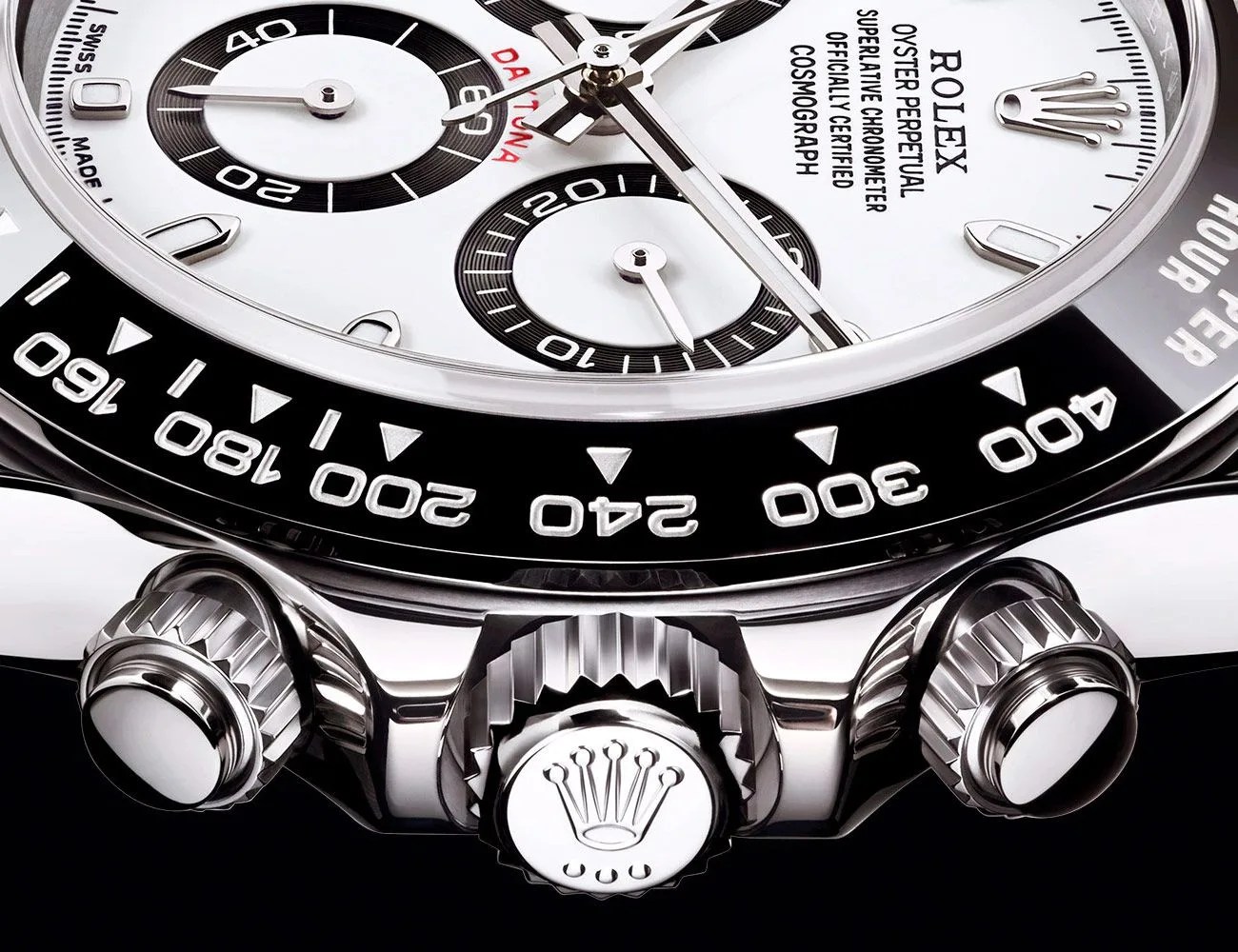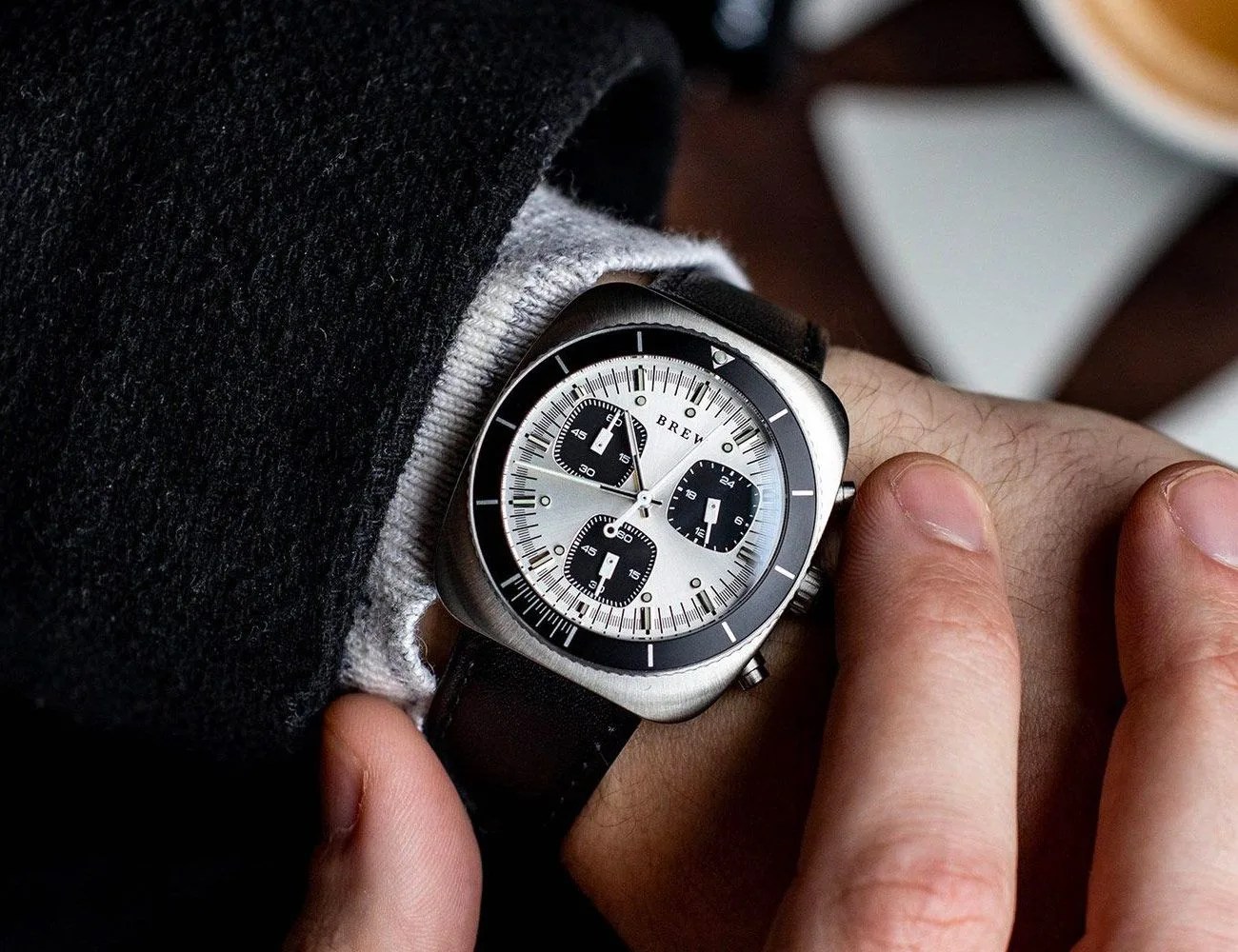There is no other type of watch that requires as much interaction from its wearer as the chronograph. Even at rest a chronograph dutifully waits, its seconds hand standing still, alert and vertical, inviting the user to start the stopwatch function.
There’s a distinct pleasure that comes from directly interacting with a finely-made mechanical chronograph movement that cannot be had by just winding or setting a conventional watch: You feel the button release under the right amount of finger pressure, hear the satisfying click, and the sweep hand begins its march. There is a tension that builds as the hand approaches sixty seconds again and again and the minute counter ticks over to another hash. Push the button again and time is stopped. Press the reset button and all hands snap back, impossibly fast, ready to go again.
The chronograph, like the wristwatch itself, is largely obsolete. Devised to measure elapsed time and speed, it has been surpassed by superior digital and optical technologies in the arenas where it once was king – the racetrack, the battlefield, the laboratory. But the chronograph remains popular perhaps because it reminds us of that golden age of athletic achievement and exploration, when the four-minute mile was achieved and man set foot on the Moon.
The man who wears a chronograph is a man of action, one who is ready to take a pulse or time an approaching thunderstorm. If you wear a chronograph, you should know its history, how to use it and know how it works. And please don’t confuse a “chronograph” with a “chronometer.” The latter is nothing more than a certification of accuracy, originally deeming a timepiece worthy for use as a navigational device. A chronograph is something completely different.
Read on.

